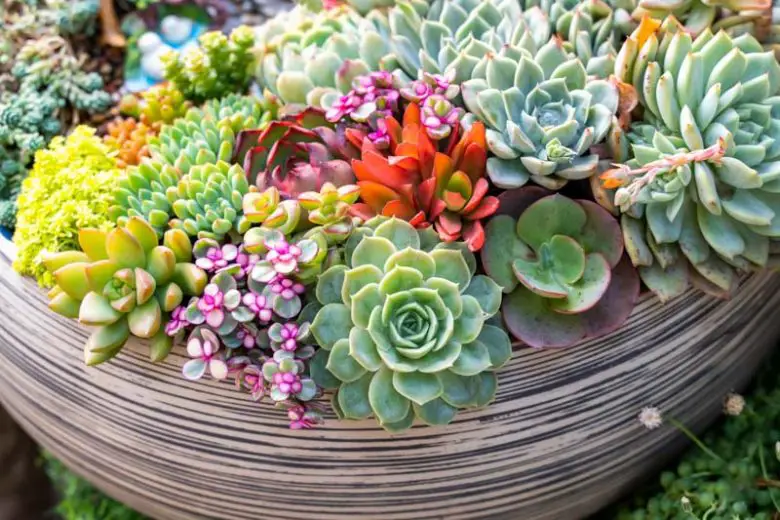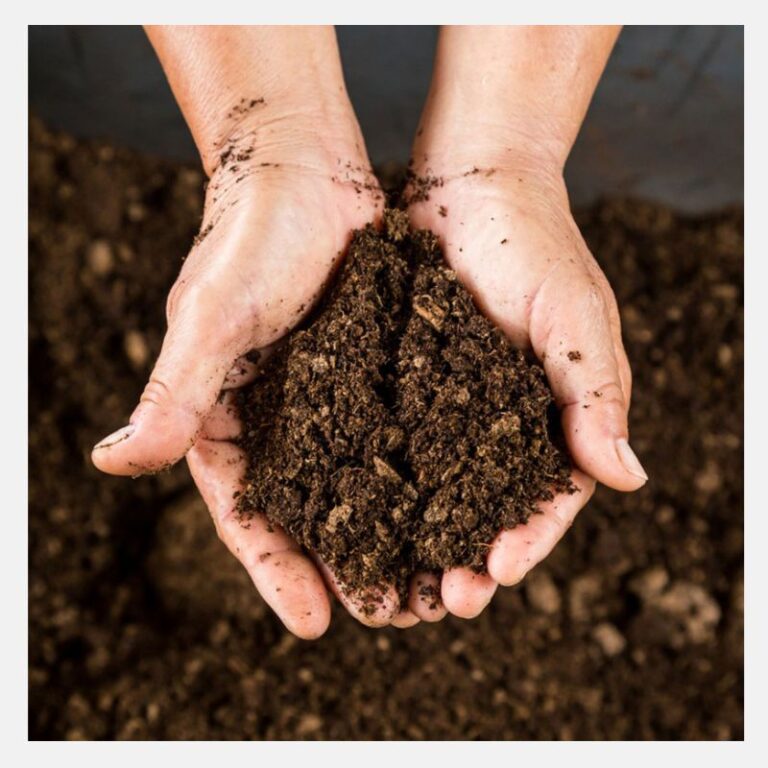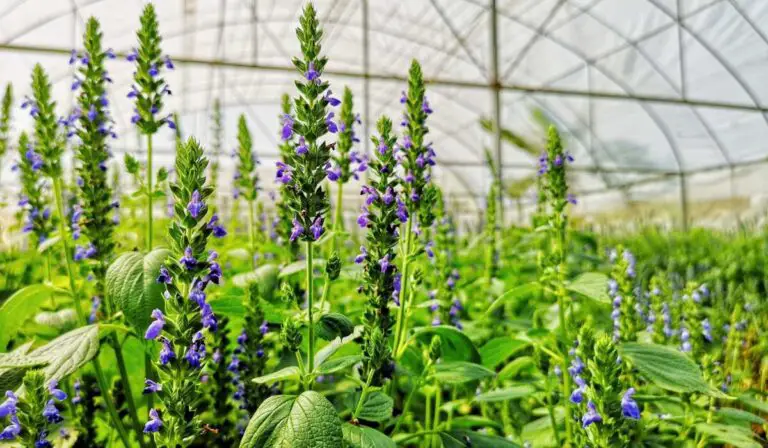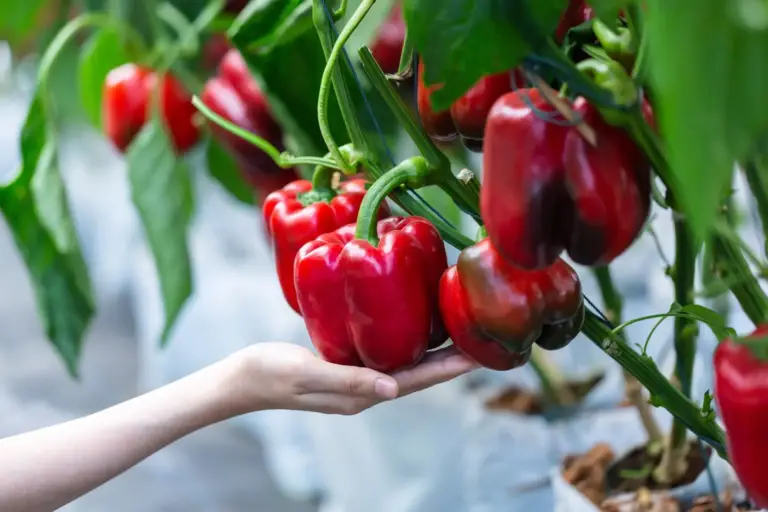How Long Do Succulents Live? How To Keep Them Alive
Types of Succulents and Their Lifespan
Succulents are a diverse group of plants that come in a wide variety of shapes, sizes, and colors. From the popular Aloe Vera to the stunning Echeveria, there is a succulent to suit every taste and style. The lifespan of succulents can vary greatly depending on the species and how well they are cared for.
Some succulents, like the Agave and Sempervivum, have a relatively short lifespan, typically lasting a few years. On the other hand, certain species, such as the Jade Plant and Ponytail Palm, can live for several decades with proper care. It is important to note that the lifespan of a succulent can also be influenced by factors like environmental conditions, growing techniques, and overall health.
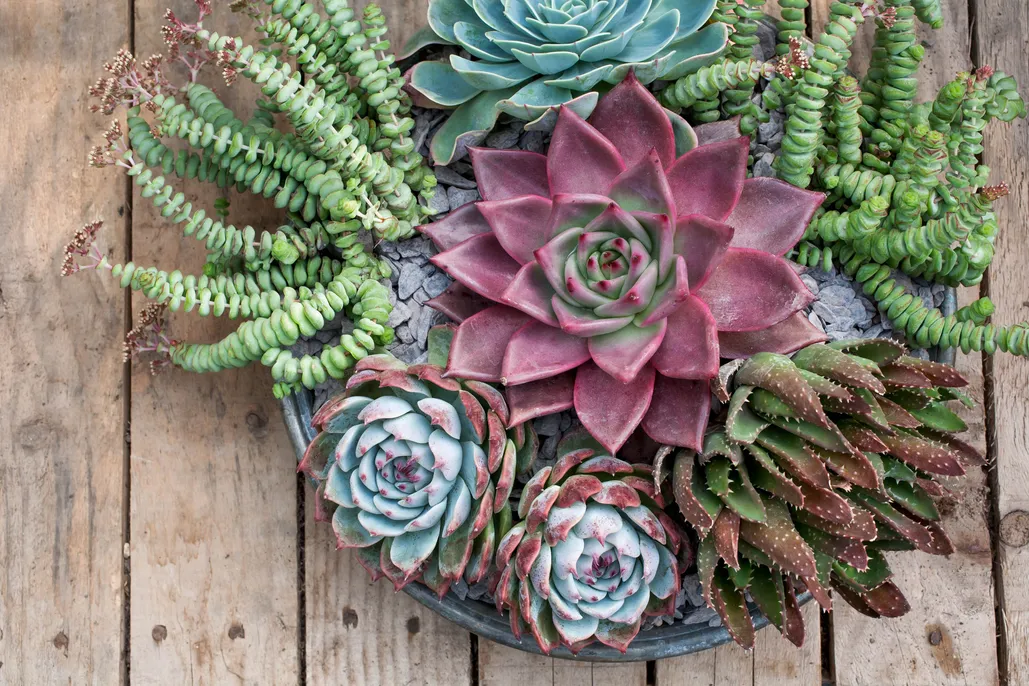
Understanding the lifespan of different types of succulents can help gardeners plan their gardening projects and make informed decisions about which plants to choose. By selecting succulents with longer lifespans, enthusiasts can enjoy the beauty of these plants for years to come. Additionally, being aware of the natural lifespan of specific succulents can also aid in determining when a plant may require extra care or assistance to thrive.
In the next sections of this article, we will explore the various factors that can affect the lifespan of succulents and provide helpful tips and techniques to promote optimal longevity. By understanding the unique qualities and needs of each succulent species, enthusiasts can create the ideal growing environment and ensure the health and vitality of their plants. Whether you are a seasoned gardener or a beginner, join us as we delve into the fascinating world of succulents and learn how to care for these remarkable plants.
Understanding the Natural Lifespan of Succulents
Succulents, with their stunning array of colors and unique shapes, have become increasingly popular in both indoor and outdoor gardens. These hardy plants are known for their ability to store water in their fleshy leaves and stems, making them perfect for those with a busy lifestyle or an affinity for low-maintenance greenery. However, it is important to understand the natural lifespan of succulents in order to provide them with the best care possible.
Like all living organisms, succulents have a limited lifespan. While some may live for a few years, others can thrive for several decades under the right conditions. Factors such as the species of succulent, environmental conditions, and overall care play crucial roles in determining the lifespan of these plants. It is essential to research the specific succulent species you have and its average lifespan to gain a better understanding of its unique needs and requirements.
To illustrate, certain succulents such as the Sempervivum tectorum, commonly known as the “hen and chicks,” have been known to live up to 10 years or more with proper care. On the other hand, more delicate species like the Dudleya succulents may only have a lifespan of 2-3 years. Understanding the natural lifespan of succulents will aid gardeners in providing suitable care and ensuring the longevity of their beloved plants. So, let’s delve deeper into the factors that influence the lifespan of succulents and learn how we can create the ideal growing environment to optimize their growth and well-being.
Factors Affecting the Lifespan of Succulents
Factors Affecting the Lifespan of Succulents
When it comes to the lifespan of succulents, various factors come into play. Understanding these factors is crucial in ensuring the longevity of these beautiful plants. One crucial aspect to consider is the natural lifespan of the specific succulent species you have. Each succulent type has its own lifespan, which can range from a few years to several decades.
In addition to the innate lifespan of succulents, environmental conditions play a significant role in determining how long they will thrive. Factors such as light, temperature, humidity, and air circulation all impact the health and lifespan of these plants. For example, succulents that are exposed to insufficient sunlight may become weak and more susceptible to diseases and pests. Similarly, extreme temperatures or high moisture levels can cause root rot and other ailments that can shorten the lifespan of your precious succulents.
Here is a table that shows the factors that can affect the succulent:
| Factor | Impact on Lifespan |
|---|---|
| Sunlight | – Insufficient light: Weakens plants and shortens lifespan. – Excessive light: Can harm and reduce longevity. |
| Temperature | – Cold stress: May lead to frost damage and decreased lifespan. – Optimal temperature: Promotes healthy growth. |
| Soil | – Poor drainage: Shortens lifespan due to root issues. – Ideal soil: Supports longevity. |
| Watering | – Overwatering: Damages roots and reduces lifespan. – Proper watering: Ensures health and longevity. |
| Pests and Diseases | – Infestations: Weaken plants and shorten lifespan. – Preventive measures: Essential for longevity. |
By providing the ideal growing environment for your succulents, you can ensure their longevity. This includes choosing the right pot and soil, implementing proper watering techniques, providing adequate sunlight, and fertilizing appropriately. In the upcoming sections, we will dive further into each of these factors to equip you with the knowledge and tools needed to create the optimal conditions for your succulents to thrive.
• Each succulent species has its own lifespan, ranging from a few years to several decades.
• Environmental conditions such as light, temperature, humidity, and air circulation affect the health and lifespan of succulents.
• Insufficient sunlight can weaken succulents and make them more vulnerable to diseases and pests.
• Extreme temperatures or high moisture levels can lead to root rot and other ailments that shorten the lifespan of succulents.
• Providing the ideal growing environment for your succulents is crucial for their longevity.
• Choose the right pot and soil for your succulents.
• Implement proper watering techniques to avoid overwatering or underwatering.
• Provide adequate sunlight by placing your succulents in a location with bright indirect light.
• Fertilize your succulents appropriately using a balanced fertilizer specifically formulated for these plants.
Creating the Ideal Growing Environment for Succulents
To ensure the optimal growth and longevity of your succulents, creating the ideal growing environment is crucial. Succulents are known for their ability to thrive in arid conditions, but this doesn’t mean they can survive in any setting. By following a few key principles, you can provide your succulents with the environment they need to flourish.
First and foremost, succulents require well-draining soil. This is essential to prevent the roots from sitting in water, which can lead to root rot. A mixture of succulent or cactus potting soil, coarse sand, and perlite is ideal for promoting proper drainage. Additionally, choosing the right pot is important. Opt for a container with drainage holes to allow excess water to escape.
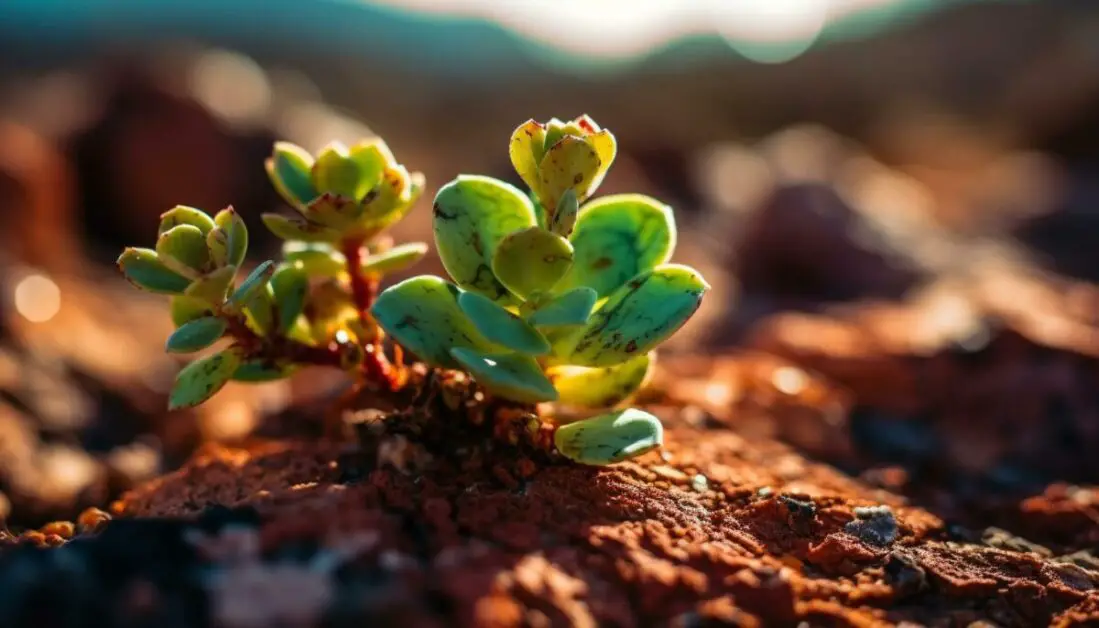
In terms of watering, succulents have unique needs. Unlike many other plants, they don’t require frequent watering. Overwatering is one of the most common mistakes made by succulent enthusiasts, as these plants are adapted to survive in dry conditions. Instead, it’s best to water succulents deeply but infrequently. Allow the soil to completely dry out between watering sessions to mimic their natural habitat. Of course, the frequency of watering will depend on various factors such as temperature, humidity, and the specific succulent species.
Another key aspect of creating the ideal growing environment for succulents is providing ample sunlight. These plants thrive in bright, indirect light, so placing them near a south-facing window or in a partially shaded outdoor area is ideal. However, be cautious of scorching sun rays, especially during the hottest months of the year. If your succulents are exposed to direct sunlight, they may experience sunburn and damage.
By following these guidelines for creating an ideal growing environment, you can ensure the health and longevity of your succulents. Remember, different species may have slightly different requirements, so it’s always a good idea to familiarize yourself with the specific needs of the succulents you are growing. Stay tuned for more expert tips and insights on caring for your succulents.
Choosing the Right Pot and Soil for Succulents
When it comes to choosing the right pot and soil for your succulents, there are a few key factors to consider. First and foremost, it is important to select a pot that provides proper drainage. Succulents are highly sensitive to overwatering, and a pot with drainage holes will help prevent excess moisture from building up in the soil, which can lead to root rot. Additionally, a pot with good drainage will help mimic the natural environment of these plants, which often grow in rocky or sandy soils that allow water to pass through quickly.
In terms of soil, succulents thrive in a well-draining mix that is specifically formulated for their needs. A common mistake is using regular potting soil, which can be too moisture-retentive and may cause the roots to rot. Instead, opt for a cactus or succulent potting mix, which is typically composed of a combination of mineral ingredients such as sand, perlite, or pumice. This type of mix allows water to flow through easily, preventing waterlogged conditions and providing the necessary aeration for the roots. Remember, choosing the right pot and soil is crucial for the health and longevity of your succulents, so it is worth investing in the appropriate materials to ensure their well-being.
Watering Techniques for Healthy Succulents
Watering is a crucial aspect of succulent care, as these plants have unique water requirements compared to other houseplants. Overwatering is one of the most common mistakes made by succulent enthusiasts, often leading to root rot and the rapid decline of these plants. It is crucial to understand that succulents are adapted to survive in arid environments, where water is scarce. Therefore, they have developed mechanisms to store water in their fleshy leaves and stems, allowing them to thrive in dry conditions.
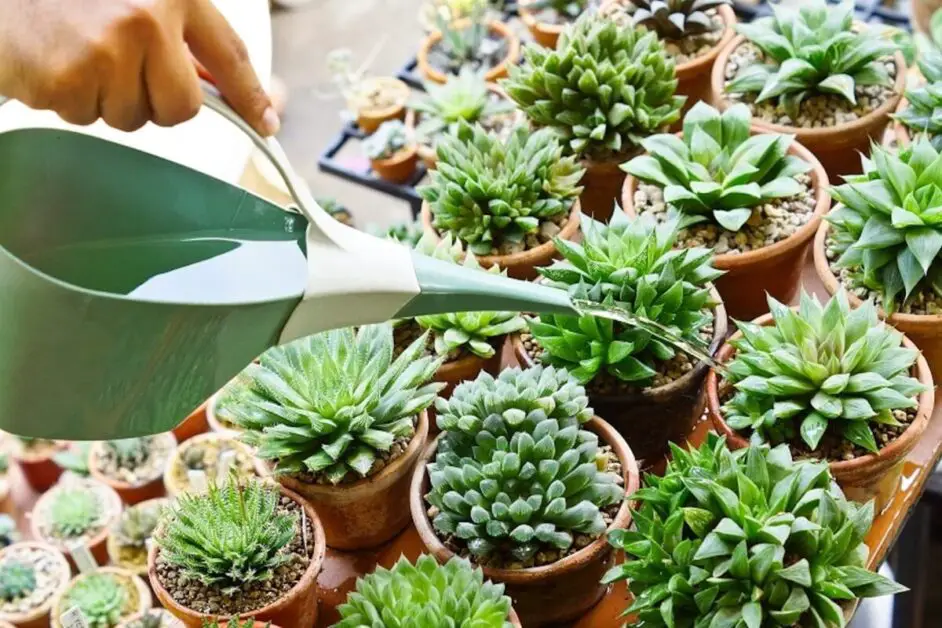
To ensure healthy succulents, it is essential to follow the “soak and dry” method. This technique involves thoroughly watering the plant, allowing the excess water to drain out completely. Once the soil is dry, which usually takes about two weeks, it’s time to water again. By providing this watering schedule, you mimic the natural drought conditions that succulents are accustomed to, preventing overwatering and promoting optimal growth. Additionally, it is advisable to water directly at the base of the plant, avoiding overhead watering, which can lead to the development of fungal diseases. Remember, when it comes to succulents, less is more when it comes to watering.
Providing Adequate Sunlight for Succulents
Proper sunlight is essential for the healthy growth of succulents. These plants have adapted to thrive in arid regions with ample sunlight, so providing them with adequate light is crucial for their overall well-being. Succulents require at least six hours of direct sunlight each day to maintain their vibrant colors and prevent stretching or etiolation.
When selecting a location to place your succulents, consider the intensity and duration of sunlight in that area. South-facing windows or outdoor spots with full sun exposure are ideal for succulents. However, if direct sunlight is too intense, you can opt for filtered or indirect sunlight to prevent scorching and sunburn.
Keep in mind that different succulent species have varying sunlight requirements. Some varieties, such as Echeverias and Haworthias, can tolerate bright, indirect light, while others, like Agave and Aloe, thrive in full sun. Research the specific needs of your succulent species to ensure they receive the optimal amount of sunlight for healthy growth. Remember, providing adequate sunlight plays a crucial role in the longevity and overall vitality of your succulent plants.
Fertilizing Succulents for Longevity
Fertilizing succulents is an essential aspect in promoting longevity and optimal growth. These plants have unique requirements when it comes to nutrients, and providing them with the right fertilizers can greatly enhance their health and vigor. However, it is important to approach fertilization with caution and precision to avoid overfeeding and causing harm to these delicate plants.
Succulents thrive in well-draining soil that is low in organic matter and rich in minerals. When choosing a fertilizer, it is crucial to select a balanced formula specifically formulated for succulents. Look for a fertilizer that has a higher ratio of phosphorus, as this nutrient plays a vital role in supporting root development and overall plant health. Additionally, a lower nitrogen content is preferred, as excessive nitrogen can lead to weak and elongated growth in succulents. It is recommended to dilute the fertilizer to half or even a quarter of the recommended strength to prevent any potential damage.
Preventing Pests and Diseases in Succulents
To ensure the health and longevity of your succulents, it is crucial to take preventive measures against pests and diseases. Succulents are hardy plants, but they can still fall victim to various pests such as mealybugs, scale insects, and spider mites. These tiny invaders can cause significant damage if left unchecked.
One effective way to prevent pests is regular inspection and early detection. Thoroughly examine your succulents, paying close attention to the underside of leaves and the junction where the leaves meet the stem. Look for any signs of insects, webs, or sticky residue. If you spot any pests, isolate the affected plant immediately and treat it with the appropriate insecticide or natural remedy. Additionally, regularly dusting and cleaning the leaves with a mild soap and water solution can help keep pests at bay.
Keeping your succulents in optimal health also plays a crucial role in pest prevention. Provide them with the right amount of sunlight, proper watering, and well-draining soil. Avoid overwatering, as excessive moisture can create a favorable environment for pests and diseases to thrive. Furthermore, maintaining good air circulation by spacing out your plants and trimming away any dead or diseased leaves can help prevent the risk of infestation. By implementing these preventive measures, you can enjoy healthy and thriving succulents for years to come.
Below the table shows us the pests and diseases and some prevention tips:
| Pest/Disease | Prevention Tips |
|---|---|
| Mealybugs | – Clean and sanitize with rubbing alcohol or soapy water tools and pots. |
| Scale Insects | – Maintain proper watering and pruning. |
| Thrips | – Use yellow sticky traps. |
| Fungus Gnats | – Allow soil to dry between waterings. |
| Root Rot | – Well-draining soil. – Avoid overwatering. |
| Powdery Mildew | – Neem oil or baking soda solution. |
| Bacterial Soft Rot | – Avoid overwatering. |
| Leaf Spot | – Water at soil level. |
| Black Sooty Mold | – Control pests causing honeydew. |
Propagating Succulents for Continuity
Propagating succulents is an excellent way to ensure the continuity of your favorite plants and expand your succulent collection. With a bit of patience and knowledge of the different propagation methods, you can easily create new plants from existing ones, allowing you to enjoy the beauty of these resilient and fascinating plants for years to come.
One of the most common and simple methods of propagating succulents is through leaf cuttings. This process involves carefully removing a healthy leaf from the mother plant and allowing it to form roots and eventually develop into a new plant. Leaf cuttings can be placed directly in well-draining soil or water until roots are established. It is important to keep the soil or water moist but not overly wet to prevent rotting. Within a few weeks to months, tiny plantlets will begin to emerge, signaling the success of the propagation process.
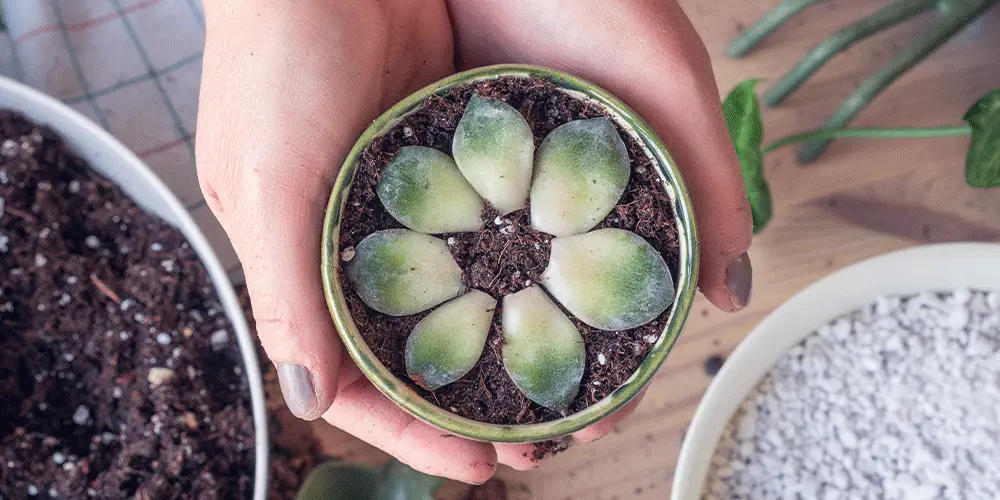
Another popular method of succulent propagation is through stem cuttings. This technique involves cutting a section of the stem with a few leaves intact from the parent plant and allowing it to callus over for a few days. Once the cut end has calloused, the stem cutting can be planted in a well-draining soil mix. It is crucial to provide the new cutting with indirect sunlight and avoid overwatering. With proper care and favorable conditions, the stem cutting will root and gradually grow into a separate succulent plant.
By utilizing these propagation methods and experimenting with various succulent species, you can create a thriving garden filled with a diverse range of succulents. Whether you are a novice gardener or a seasoned plant enthusiast, propagating succulents for continuity is a rewarding and enjoyable process that allows you to explore the wonders of nature firsthand. So why not try your hand at propagating your favorite succulents and witness the joy and satisfaction of cultivating new life?
Pruning and Grooming Succulents for Optimal Growth
Pruning and grooming are essential tasks for maintaining the optimal growth of succulents. By removing dead or damaged plant parts, we can encourage healthy growth and prevent the spread of diseases. Regular pruning also helps in shaping the succulent to achieve a desired form or size.
When it comes to pruning succulents, it is important to use clean and sharp tools to avoid damaging the plant. A pair of pruning shears or scissors sterilized with rubbing alcohol is recommended. Start by inspecting the succulent for any dead or yellowing leaves, as well as any pests or signs of disease. Carefully remove these leaves, making sure to cut as close to the stem as possible without injuring the healthy tissue. For taller varieties, you may also consider trimming the top to encourage branching and create a fuller plant.
Grooming, on the other hand, involves removing any debris or dust that may accumulate on the succulent’s leaves. This not only enhances its aesthetic appeal but also allows better absorption of sunlight and air circulation. Simply take a soft brush or cloth and gently wipe off any dirt or dust particles from the leaves. As succulents are known for their ability to survive in arid conditions with minimal water, it is important to avoid wetting the leaves during grooming, as excess moisture can lead to rot.
In conclusion, pruning and grooming succulents are important practices to promote optimal growth. By removing dead or damaged parts and keeping the plant clean, we can ensure the succulent’s health and enhance its visual appeal. Proper pruning techniques will encourage new growth and maintain a well-shaped succulent, allowing gardening enthusiasts to enjoy their beautiful and thriving plants for years to come.
Signs of Aging and Dying in Succulents
A common concern among succulent enthusiasts is how to identify signs of aging and dying in their beloved plants. While succulents are known for their resilience and ability to thrive in harsh conditions, they are not immortal. Understanding the signs of aging and dying in succulents can help gardeners intervene in a timely manner and potentially save their plants.
One of the most noticeable signs of aging in succulents is the loss of vibrancy in their leaves. As a succulent ages, its leaves may become dull in color and lose their plumpness. Additionally, you may observe the development of dry, shriveled, or wilted leaves as the plant’s vitality diminishes. Another telltale sign of aging is the elongation of stems and a more stretched-out appearance of the plant.
On the other hand, recognizing signs of dying in succulents is crucial in preventing the spread of disease or pests to other plants. A definite sign of a succulent in the dying process is the yellowing or browning of leaves. This can indicate a range of issues, including overwatering, root rot, or infestation by pests such as mealybugs or spider mites. It is essential to act promptly when these symptoms appear to prevent the decay from spreading, as recovery becomes increasingly difficult the longer the plant is in a deteriorating state. Building your knowledge on the signs of aging and dying in succulents will enable you to take appropriate action and care for your plants effectively.
Steps to Revive a Struggling Succulent
Succulents are known for their ability to thrive in arid conditions, but even these hardy plants can sometimes struggle and need a little extra care. If you notice a succulent looking withered, limp, or discolored, it may be signaling that it is in distress. Fortunately, with proper attention and some simple steps, you can revive a struggling succulent and bring it back to health.
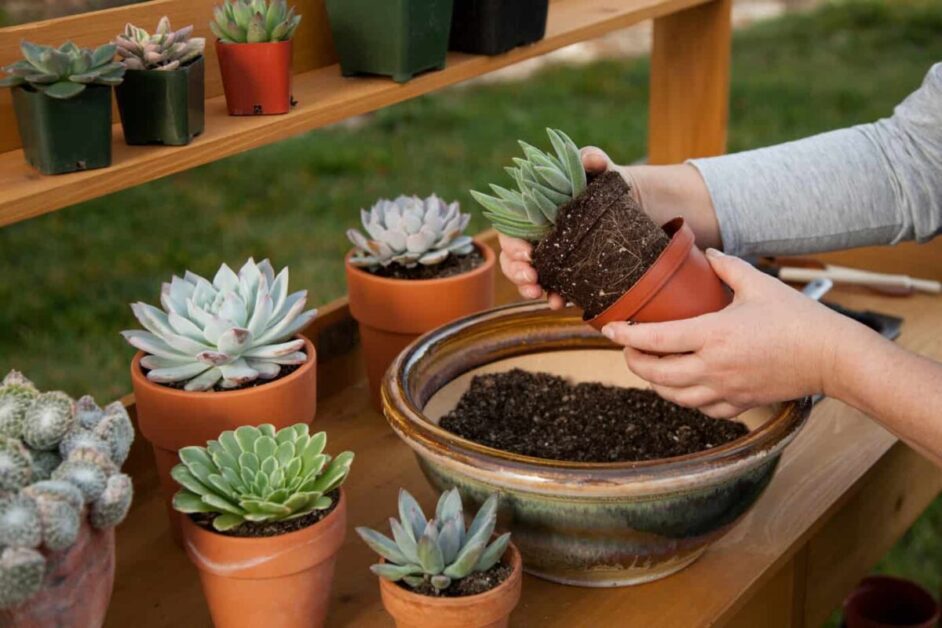
The first step in reviving a struggling succulent is to assess its current condition. Carefully examine the plant for any signs of disease, pest infestations, or root rot. If you notice any of these issues, it is important to address them before proceeding with the revival process. Trim away any diseased or damaged leaves or stems, and if necessary, treat the plant with a suitable insecticide or fungicide. Once you have addressed any underlying problems, you can move on to the next steps to help your succulent recover.
Winter Care Tips for Succulents
When it comes to caring for your succulents during the winter months, there are a few important tips to keep in mind. Firstly, it’s crucial to remember that most succulents are native to warm and arid climates, making them more susceptible to cold temperatures. To protect your plants, it’s recommended to bring them indoors or provide them with some form of shelter during the winter.
Another key consideration for winter care is watering. Succulents are adapted to store water in their leaves and stems, allowing them to survive in dry conditions. However, during winter, their growth slows down, and they require less water. Overwatering can lead to rot and other fungal diseases. It’s essential to reduce the frequency of watering and allow the soil to dry out between waterings. Monitoring the moisture levels in the soil and adjusting your watering schedule accordingly will help ensure the health and longevity of your succulents during the winter season.
Success Stories: Inspiring Examples of Long-Lived Succulents
In the world of succulents, there are a few remarkable success stories that inspire and astonish even the most seasoned gardeners. One such story is that of “Agave Americana,” a striking succulent known for its impressive longevity. With a lifespan that can reach up to 25 years, this iconic succulent has become a symbol of resilience and endurance in the plant kingdom. Its thick, fleshy leaves, adorned with sharp spines, provide it with a robust defense mechanism against predators and adverse conditions. This, coupled with its ability to store water for extended periods, allows the Agave Americana to thrive in arid regions where few plants can survive. Its remarkable adaptability and timeless beauty make it a testament to the wonders of nature.
Another captivating success story is that of the “Echeveria elegans,” commonly known as the “Mexican Snowball.” This charming succulent has captured the hearts of gardeners and plant enthusiasts with its delicate, rosette-shaped leaves that resemble perfect green roses. But what truly sets it apart is its incredibly long lifespan. The Mexican Snowball can live for up to 15 years, making it a cherished addition to any succulent collection. Its resilience in the face of various growing conditions, from full sun to partial shade, allows it to thrive in diverse environments. This adaptable nature, combined with its low maintenance requirements, has made the Mexican Snowball a favorite among both novice and experienced gardeners.
These success stories serve as a reminder that with proper care and attention, succulents can flourish and bring joy for years to come. From the Agave Americana’s resilience in arid landscapes to the Mexican Snowball’s enduring beauty, these examples inspire us to create the ideal growing environment for our own succulents. By understanding the natural lifespan of succulents and providing them with adequate sunlight, water, and nutrients, we can ensure their long and prosperous lives.
Watch the video to learn more about succulent.
Expert Tips and Recommendations for Succulent Care
Expert Tips and Recommendations for Succulent Care
1. Maintain the Right Moisture Balance: Succulents thrive in well-draining soil, so it’s crucial to strike the right balance when it comes to watering. Overwatering can lead to root rot, while underwatering can cause wilting and stunted growth. As a general rule, water succulents deeply but infrequently, allowing the soil to dry out between waterings. Ensure that the pots have drainage holes to prevent water from accumulating at the bottom. Additionally, avoid misting or spraying succulents as this can lead to moisture-related issues.
2. Provide Ample Sunlight: Succulents are renowned for their ability to withstand arid conditions, thanks to their ability to store water in their leaves and stems. To ensure their optimal growth and longevity, it’s essential to provide them with ample sunlight. Place succulents in a spot where they can receive at least six hours of direct sunlight per day. However, be cautious of scorching, especially during the hot summer months. If intense sun exposure is a concern, consider using sheer curtains or bring the plants indoors during the peak midday heat.
How long do succulents typically live?
The lifespan of succulents can vary depending on the species, but most succulents have an average lifespan of several years.
What factors can affect the lifespan of succulents?
Several factors can affect the lifespan of succulents, including proper watering techniques, adequate sunlight, suitable pot and soil choices, and protection from pests and diseases.
How can I create an ideal growing environment for succulents?
To create an ideal growing environment for succulents, it is important to provide well-draining soil, a pot with drainage holes, and place them in a location with sufficient sunlight and proper airflow.
What type of pot and soil should I choose for my succulents?
It is recommended to choose a pot with drainage holes to prevent waterlogging. For soil, a well-draining mix specifically formulated for succulents and cacti is ideal.
How often should I water my succulents?
Succulents have low water needs, and it is generally recommended to water them deeply but infrequently. Allow the soil to dry out completely between watering sessions.
How much sunlight do succulents require?
Succulents thrive in bright sunlight, so it is best to provide them with at least 6 hours of direct sunlight per day. However, be cautious of intense afternoon sun that can scorch the leaves.
Do succulents require fertilization?
While succulents can survive without fertilization, applying a balanced fertilizer specifically formulated for succulents during the growing season can help promote their longevity.
How can I prevent pests and diseases in my succulents?
To prevent pests and diseases in succulents, regularly inspect the plants for any signs of infestation or damage. Maintain good hygiene, avoid overwatering, and use organic pest control methods if necessary.
How can I propagate succulents for continuity?
Succulents can be propagated through various methods such as leaf or stem cuttings, division, or by collecting and sowing seeds. Each propagation method has specific requirements and steps to follow.
Is pruning and grooming necessary for succulents?
Pruning and grooming succulents are not essential but can help maintain their optimal growth. Removing dead or damaged leaves, shaping the plants, and removing overgrown parts can improve their overall appearance.
How can I revive a struggling succulent?
If a succulent is struggling, assess its watering and light conditions. Adjust watering frequency and ensure it is receiving adequate sunlight. If necessary, repot the succulent in fresh well-draining soil.
What care should I provide for succulents during winter?
During winter, succulents enter a dormant phase and require less water and sunlight. Protect them from frost and excessive moisture, and reduce watering to prevent root rot.
Are there any success stories of long-lived succulents?
Yes, there are many success stories of long-lived succulents. These success stories demonstrate the importance of proper care and maintenance in extending the lifespan of succulents.

